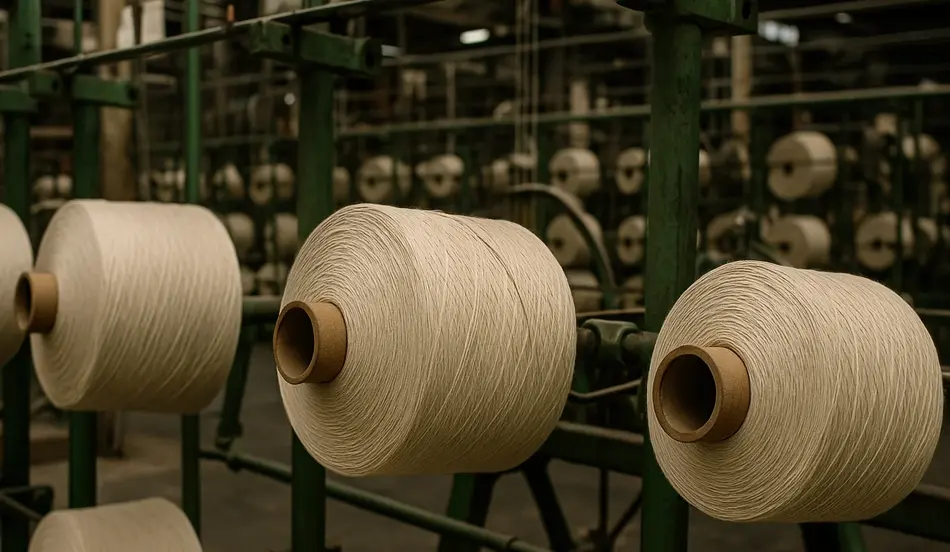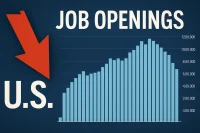The US textile industry tariffs impact has become a critical concern for American manufacturers, with devastating consequences that extend far beyond simple trade policy. As the Trump administration’s aggressive tariff strategy continues to reshape global supply chains, companies like Cocona Labs are experiencing unprecedented challenges that threaten their very existence. The textile industry, once a cornerstone of American manufacturing employing 1.5 million workers, now faces a crisis that could fundamentally alter the landscape of domestic production.
The Current State of US Textile Manufacturing
The American textile industry has undergone a dramatic transformation over the past several decades. Once the world’s largest exporter of textiles, the United States now ranks second globally, with employment dropping from 1.5 million workers to approximately 470,000. This decline has been largely attributed to the rise of China as the dominant textile producer, which strategically developed its infrastructure and manufacturing capabilities to capture market share.
Companies like Cocona Labs represent the innovative edge of American textile manufacturing. The Colorado-based company has developed proprietary 37.5 technology that removes humidity from the microclimate next to skin, helping athletes and outdoor enthusiasts maintain peak performance in various weather conditions. Their technology is licensed to over 100 brands including Sleep Number, The Men’s Wearhouse, Salomon, and First Lite, demonstrating the potential for American innovation in the textile sector.
The Technology Behind American Textile Innovation
Cocona Labs’ success story illustrates the sophisticated nature of modern American textile manufacturing. The company mines volcanic sand in the United States, converting it into masterbatch concentrations that are integrated into spinning operations for nylon, polypropylene, and polyester production. This proprietary process, protected by patents and trade secrets, represents the kind of high-value manufacturing that should be thriving in the American economy.
The company’s business model relies on two primary revenue streams: selling masterbatch to yarn spinners worldwide and licensing technology to major brands. This approach has allowed Cocona Labs to maintain a competitive position in the global market while keeping manufacturing operations in the United States. However, the current tariff environment threatens to undermine this successful business model.
How Tariffs Are Disrupting Global Supply Chains
The US textile industry tariffs impact has created unprecedented uncertainty in global supply chains. Companies are struggling to price their products accurately as tariff rates fluctuate, creating a challenging environment for long-term planning and investment. The situation has become so volatile that businesses are delaying major decisions and reducing their overall volume of operations.
For companies like Cocona Labs, the tariff situation presents multiple challenges. The company exports masterbatch to various countries, including China, India, Taiwan, and Korea, making them vulnerable to both US tariffs on imports and reciprocal tariffs on their exports. When China retaliated against US tariffs with a 145% tariff on certain products, it nearly destroyed Cocona Labs’ business model, forcing the company to quickly liquidate inventory from their Shanghai warehouse within 36 hours.
The Real Cost of Trade Wars
The financial impact of tariffs extends beyond simple percentage increases. Companies are forced to absorb significant portions of tariff costs to maintain customer relationships, creating unsustainable business models. Cocona Labs recently paid a 16.5% tariff on exports to China, absorbing 10% of that cost themselves. This approach, while necessary to maintain business relationships, is not sustainable long-term and will ultimately result in higher prices for consumers.
The uncertainty created by tariffs has also reduced investment in new products and technologies. Companies are hesitant to commit resources to research and development when they cannot predict the final cost structure of their products. This reduction in innovation investment could have long-term consequences for American competitiveness in the global textile market.
The Manufacturing Reshoring Reality Check
Despite the Trump administration’s stated goal of bringing manufacturing back to the United States, the US textile industry tariffs impact suggests that this objective may be counterproductive. The reality is that most textile manufacturing jobs are not desirable to American workers, and the cost of labor in the United States makes domestic production economically unfeasible for many products.
The case of Vietnam illustrates this complexity. Apparel from Vietnam already faced a 16.5% tariff before the Trump administration’s additional 20% tariff, resulting in a total 36.5% tariff on Vietnamese clothing imports. This dramatic increase in costs will inevitably be passed on to consumers, reducing demand and potentially harming the very industries the tariffs are intended to protect.
Why Reshoring Textile Manufacturing Won’t Work
The fundamental economics of textile manufacturing make reshoring to the United States extremely challenging. The labor-intensive nature of textile production, combined with the high cost of American labor, would result in dramatically higher prices for finished goods. Consumers would face significantly increased costs for clothing, bedding, and other textile products, potentially reducing overall demand and harming the industry.
Additionally, the infrastructure required for large-scale textile manufacturing has largely moved overseas. Rebuilding this infrastructure in the United States would require massive investments that may not be economically viable given the competitive pressures from established manufacturing centers in Asia and other regions.
Strategic Adaptations in the Face of Tariffs
Companies are being forced to develop creative strategies to survive in the current tariff environment. Cocona Labs has implemented several approaches to mitigate the impact of tariffs, including diversifying their customer base across multiple countries and considering moving some manufacturing operations overseas to reduce reciprocal tariff exposure.
The company has been shipping masterbatch to various countries including Turkey, India, Taiwan, China, Korea, and others to ensure customers have options and to mitigate the impact of tariffs in any single country. This diversification strategy helps reduce risk but also increases operational complexity and costs.
The Challenge of Pricing in Uncertainty
One of the most significant challenges facing companies is the inability to accurately price products due to tariff uncertainty. Cocona Labs recently faced this issue when working with a major hotel chain to incorporate their technology into bedding products. Their Chinese partners were unable to determine appropriate pricing for yarn production due to uncertain tariff implications, creating delays and potential lost business opportunities.
This pricing uncertainty extends throughout the supply chain, affecting everyone from raw material suppliers to final consumers. The lack of clear, long-term tariff policies makes it difficult for companies to make strategic decisions about investments, partnerships, and market expansion.
The Broader Economic Impact
The US textile industry tariffs impact extends far beyond individual companies. The reduction in business volume and investment has broader implications for the American economy, potentially affecting employment, innovation, and economic growth. Companies that were previously thriving are now struggling to maintain their operations, creating ripple effects throughout their supply chains and local communities.
The situation also highlights the interconnected nature of the global economy. American companies that export products face retaliation from trading partners, creating a cycle of escalating trade tensions that ultimately harm all parties involved. The current approach to trade policy may be creating more problems than it solves.
Looking to Hire Fast?
Hiring managers can now post jobs for free on WhatJobs and connect with millions of jobseekers.
👉 Post a Job Now →The Future of American Textile Manufacturing
The long-term outlook for American textile manufacturing depends largely on how the current tariff situation resolves. Companies like Cocona Labs are committed to maintaining their operations in the United States and preserving their workforce, but they cannot sustain indefinite tariff pressure without making difficult decisions about their business models.
The key to success will be developing more surgical approaches to trade policy that address specific issues without creating broad disruptions to global supply chains. Companies need predictable, long-term policies that allow them to make strategic investments and maintain competitive positions in the global market.
Lessons from the Front Lines
The experience of companies like Cocona Labs provides valuable insights into the real-world impact of trade policies. While tariffs may seem like a simple solution to complex trade issues, their implementation creates unintended consequences that can harm the very industries they’re intended to protect. The textile industry’s experience demonstrates the importance of careful, strategic trade policy that considers the full range of economic impacts.
Companies that survive and thrive in this environment will be those that demonstrate flexibility, innovation, and strategic thinking. They will need to adapt their business models, diversify their operations, and maintain strong relationships with customers and suppliers despite the challenges created by trade tensions.
Frequently Asked Questions
How are US textile industry tariffs impact affecting American manufacturers?
The US textile industry tariffs impact is devastating American manufacturers by increasing costs, reducing business volume, and creating uncertainty that discourages investment. Companies like Cocona Labs are being forced to absorb tariff costs, reduce operations, and consider moving manufacturing overseas to survive.
What strategies are textile companies using to adapt to tariffs?
Textile companies are diversifying their customer base across multiple countries, considering moving manufacturing operations overseas, and developing creative pricing strategies to mitigate the US textile industry tariffs impact. They’re also reducing investment in new products due to uncertainty about future costs.
Why won’t reshoring textile manufacturing to the US work?
Reshoring textile manufacturing won’t work because American workers don’t want these jobs, labor costs are too high, and the infrastructure has moved overseas. The US textile industry tariffs impact would make domestic production economically unfeasible, resulting in dramatically higher prices for consumers.
What is the long-term outlook for the textile industry amid tariffs?
The long-term outlook depends on resolving the current tariff situation with more surgical trade policies. The US textile industry tariffs impact is forcing companies to make difficult decisions about their operations, and the industry’s future depends on developing predictable, strategic trade policies that don’t create broad supply chain disruptions.
Case in Point
Consider a small American textile company that exports specialized fabric treatments to China. Before tariffs, they had a profitable business with steady growth. Now, with 16.5% tariffs on their exports and Chinese retaliation tariffs, they’re losing money on every shipment. The company’s CEO spends entire mornings trying to figure out how to price products for a major hotel chain deal, but the uncertainty makes it impossible to give customers accurate quotes. They’re considering moving their manufacturing to China just to avoid the reciprocal tariffs, which would mean laying off their American workers and abandoning their commitment to domestic manufacturing. This real-world scenario illustrates how the US textile industry tariffs impact is forcing companies to make impossible choices between survival and their principles.




